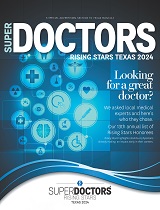American Academy of Ophthalmology (AAO)
June 21, 2016
A new study estimates that 9.6 million adults in the United States are highly myopic, or severely nearsighted. Of those, nearly 820,000 have a degenerative form of the disease and more than 41,000 suffer a complication called myopic choroidal neovascularization that could cause long-term vision loss, with women at higher risk. The findings are being published online today in Ophthalmology, the journal of the American Academy of Ophthalmology. This is the first large-scale study ever done to calculate the real-world prevalence of myopic choroidal neovascularization in the United States.
Myopia has become increasingly common over the past several decades. In the United States, the number of nearsighted people rose from about 25 percent in the early 1970s to 40 percentaround the turn of millennium. While nearsightedness often can be corrected with eyewear or surgery, severe nearsightedness in which the eye continues to elongate can result in complications as the eye stretches.
Progressive high myopia, also called pathologic myopia, is a degenerative form of the disease. It can cause atrophy of the retina that lines the back of the eye. People with high myopia and the degenerative form are at higher risk of myopic choroidal neovascularization. This condition is characterized by the growth of new, unstable blood vessels beneath the retina. If untreated, it can cause vision loss that may then become permanent. As the prevalence of myopia continues rising, researchers are looking to better understand myopic choroidal neovascularization.
This study was conducted jointly by investigators from the American Academy of Ophthalmology, Genentech, the National Institutes of Health and UC Davis. Among the findings:
- Nearly 4 percent of adults in the United States have high myopia, defined as -6.0 D or worse in their right eye. That is equivalent to 9.6 million people.
- The prevalence of progressive high myopia is 0.33 percent. That is equivalent to 817,829 adults.
- The prevalence of myopic choroidal neovascularization is 0.017 percent. While the disease appears rare, it affects 41,111 people in the United States.
- Women appear to be at greater risk for complications of high myopia. The prevalence rate for progressive high myopia was 0.42 percent in women compared to 0.25 percent in men. An estimated 527,000 women have that condition compared to 292,000 men. Similarly, for myopic choroidal neovascularization, the prevalence rate for women is double that of men.
“Prior to this study, we really had no idea how many people had myopic choroidal neovascularization, which can be devastating,” said lead author Jeffrey Willis, M.D., Ph.D., a retina fellow at the UC Davis Eye Center and a clinical research fellow at Genentech. “I think the findings emphasize the growing issue of nearsightedness and the burden it creates in terms of medical complications that cannot be fixed with just glasses or contacts.”
To calculate the prevalence of high myopia, the team took diagnosis data from 8,865 participants in the National Health and Nutrition Examination Survey (NHANES) from 2005 through 2008. They applied the prevalence to 2014 U.S. Census Bureau population numbers to estimate the number of people affected. On its own, NHANES does not have a large enough sample size or the right type of ophthalmic data to accurately calculate the prevalence of myopic choroidal neovascularization. To do that, and to find the prevalence of progressive high myopia, researchers turned to 2014 data on 2.6 million individuals in the Academy’s IRIS Registry®, the nation’s only comprehensive database of ophthalmic patient outcomes. The rate was then applied to the high myopia population numbers to come up with real-world estimates.
The IRIS Registry is the only source of real-time data on ophthalmic care nationwide. It currently holds clinical information from 88 million office visits to 13,739 ophthalmologists and eye care professionals. Without this volume of clinical information, the prevalence of these diseases among a real-world population could not have been calculated, researchers said.
"The sheer size of the IRIS Registry gives us tremendous research capabilities we did not possess before in ophthalmology,” said retina specialist David W. Parke, II, M.D., CEO of the American Academy of Ophthalmology and a co-author of the study. “We believe using IRIS Registry data to more accurately establish eye disease prevalence, find new risk factors and evaluate treatments for many types of eye conditions will become more common, to the benefit of the public.”
“The Prevalence of Myopic Choroidal Neovascularization in the United States,” Willis et al. Ophthalmology, article in press, June 2016. DOI: 10.1016/j.ophtha.2016.04.021. For a full copy of the study or more information, please contact the Academy’s Public Relations Department at [email protected].
For more information on myopia or other eye conditions and diseases, visit the American Academy of Ophthalmology’s EyeSmart® website.

